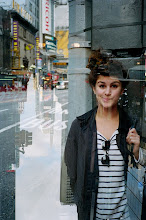Small lies that tell a big truth
Documenting war through photography[Mobus Media]War photography is one of the most challenging forms journalism can take. Aside from the danger that surrounds it and the watchful eye of the military, striking an ethical balance is a finely tuned skill.
But environment and morals aside, another looming issue is how the photographer actually conveys their message?
The staging and altering of photographs has been happening since the 19th century. Images from both World Wars were tampered with for propoganda purposes, pictures were faked or staged, often to shame or invoke hatred towards enemies.
Soviet Russia employed this technique in a blatant way. Stalin would sometimes have people erased from photographs when they fell out of favour with him. For instance, Nikolai Yehzov, head of the secret police, was removed from a picture after being executed.
Stalin's photo manipulation – all these years ago – proves that it was not something that was sparked by the digital age, though it has grown in popularity and become easier with photoshopping software.
Because we are now equipped with the tools that give anyone the power to tamper with an image, more and more of it is appearing in the media. However, this also means that more and more people can recognise manipulated photos.
Adnan Hajj, a Lebanese photographer who worked for Reuters, added smoke to an image of an IDF attack on Beirut. It was spotted by a blogger and Reuters disassociated themselves with Hajj soon after. He also duplicated a missile being launched to make the picture more dramatic.
Faking it
Staged photographs are harder to identify. Award-winning photographers, whose pictures have been reproduced more times than any others, have been accused of faking photographs and creating false moments in history.
Robert Capa’s picture of a soldier being shot in the Spanish Civil War, is thought by many, to be a staged image. Eddie Adams’ photograph of a Colonel with a gun to a prisoner’s head in Saigon during the Vietnam war is suspected to have been outside, in order for the photo to be taken in a better light, when executions usually happened inside. Was this creating a scene as if for a film?
Photojournalists should capture true and natural events in their pictures. It is one of the differences between them and art photographers. However, is there an argument to be made in this case?
On occasion, by staging or changing a photograph, can photojournalists in fact convey a true message more effectively?
Can a photograph that is a lie represent the bigger picture? In Capa and Adams’ cases, the subjects of their pictures were true, but the moments at which they were taken were possibly staged. Or does this show that their own, factually correct, photographs are not good enough?
The idea that a big truth can be made from small lies was an ethos of George Orwell’s. He would create composite characters and made up events, but only to represent larger issues. Photographers have, in the past, merged photographs together to compose more dramatic and all-encompassing images, as well as tampering and staging them. The question is – will this ever be acceptible?
Will the end ever justify the means for photojournalism in war when there are so many negative ways in which manipulation can be, and has been, used?
http://www.artslondonnews.co.uk/20091117_small-lies

No comments:
Post a Comment